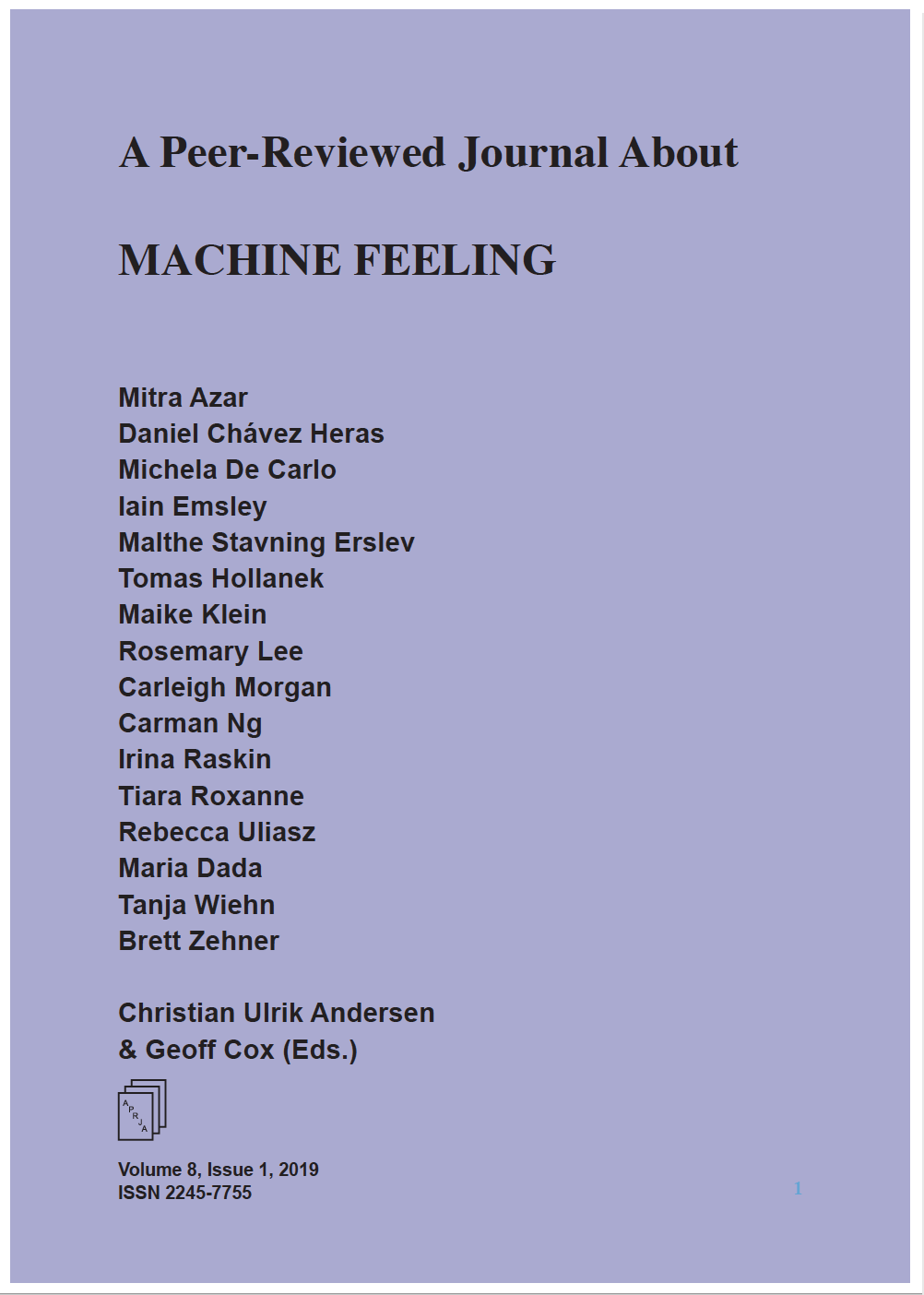Robotic affective abilities
DOI:
https://doi.org/10.7146/aprja.v8i1.115413Abstract
Within both popular media and (some) scientific contexts, affective and ‘emotional’ machines are assumed to already exist. The aim of this paper is to draw attention to some of the key conceptual and theoretical issues raised by the ostensible affectivity. My investigation starts with three robotic encounters: a robot arm, the first (according to media) ‘emotional’ robot, Pepper, and Mako, a robotic cat. To make sense of affectivity in these encounters, I discuss emotion theoretical implications for affectivity in human-machine-interaction. Which theories have been implemented in the creation of the encountered robots? Being aware that in any given robot, there is no strict implementation of one single emotion theory, I will focus on two commonly used emotion theories: Russell and Mehrabian’s Three-Factor Theory of Emotion (the computational models derived from that theory are known as PAD models) and Ekman’s Basic Emotion Theory. An alternative way to approach affectivity in artificial systems is the Relational Approach of Damiano et al. which emphasizes human-robot-interaction in social robotics. In considering this alternative I also raise questions about the possibility of affectivity in robot-robot-relations.
Downloads
Published
Issue
Section
License
Copyright (c) 2019 A Peer-Reviewed Journal About

This work is licensed under a Creative Commons Attribution-NonCommercial-ShareAlike 4.0 International License.
Copyrights are held by the individual authors of articles.
Unless stated otherwise, all articles are published under the CC license: ‘Attribution-NonCommercial-ShareAlike’.
The journal is free of charge for readers.
APRJA does not charge authors for Article Processing Costs (APC)


